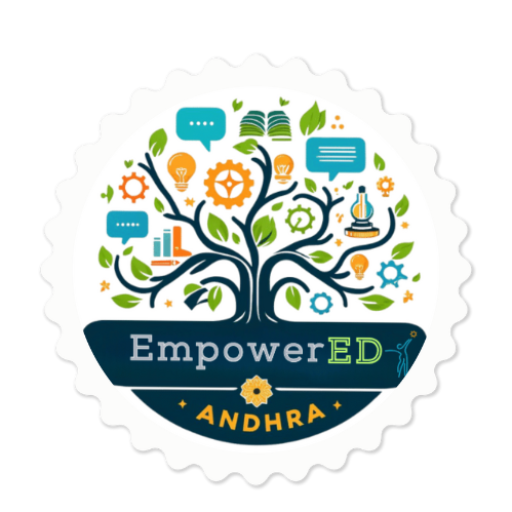The Mini Water Cycle Experiment is an engaging and hands-on way to learn about the water cycle, one of nature’s most fascinating processes. Using simple materials, students can recreate the cycle of evaporation, condensation, and precipitation in a controlled environment. This experiment connects textbook knowledge to real-world phenomena, making it an ideal learning activity for students, parents, and educators.
What is the Mini Water Cycle Experiment?
This experiment simulates the natural water cycle in a small setup, showing how water evaporates, condenses into clouds, and returns to the surface as precipitation. By observing these processes, students can understand how water moves through Earth’s atmosphere and surface.
What You’ll Learn
- The stages of the water cycle: Evaporation, condensation, and precipitation.
- The importance of the water cycle in maintaining life on Earth.
- Real-world applications of the water cycle, such as weather patterns and water conservation.
Materials Needed
To create your mini water cycle, gather the following materials:
- A large, clear plastic or glass container (e.g., a jar or bowl)
- A small cup or jar (to represent land)
- Plastic wrap or cling film
- Warm water
- Ice cubes
- Tape or a rubber band
Step-by-Step Instructions
Step 1: Set Up the Container
- Fill the large container with about 2 inches of warm water. This represents the water on Earth’s surface (oceans, lakes, etc.).
Step 2: Add the “Land”
- Place the small cup or jar inside the larger container. This represents land. Ensure it does not float by adding some weight if needed.
Step 3: Cover the Container
- Stretch plastic wrap over the top of the large container to seal it. Use tape or a rubber band to hold the plastic wrap in place.
Step 4: Add Ice
- Place a few ice cubes on top of the plastic wrap. This simulates the cooler atmosphere where condensation occurs.
Step 5: Observe the Cycle
- Place the container in a sunny spot or under a lamp for 15–30 minutes. Observe as water evaporates, condenses on the plastic wrap, and drips back into the container (precipitation).
What’s Happening?
The Mini Water Cycle Experiment visually demonstrates the stages of the water cycle:
1. Evaporation
- The warm water in the container heats up, causing water molecules to turn into vapor and rise.
- This represents the process of evaporation in nature, where water from oceans, lakes, and rivers turns into water vapor.
2. Condensation
- When the warm water vapor touches the cooler plastic wrap (cooled by the ice cubes), it condenses into tiny droplets.
- This is similar to how clouds form in the atmosphere when water vapor cools.
3. Precipitation
- The water droplets on the plastic wrap grow larger and eventually drip back into the container.
- This simulates rain, completing the water cycle.
Scientific Explanation: Connecting to Textbooks
For students in Class 6–9, this experiment ties directly to geography and science topics:
- Class 6 Science: Introduction to the water cycle and its role in the environment.
- Class 7 Geography: Understanding weather patterns and the movement of water in the atmosphere.
- Class 9 Geography and Biology: A deeper exploration of the water cycle’s impact on ecosystems and weather.
Real-Life Applications
Understanding the water cycle is essential for many real-world scenarios:
- Weather Forecasting: Meteorologists study evaporation, condensation, and precipitation to predict weather.
- Agriculture: Farmers rely on knowledge of the water cycle to plan irrigation and crop growth.
- Water Conservation: Understanding the water cycle emphasizes the importance of preserving water sources.
Extend the Experiment
1. Use Different Heat Sources
- Place the container under direct sunlight, a lamp, or near a heater to observe how different heat sources affect evaporation.
- Scientific Insight: Warmer conditions accelerate evaporation, showing how climate affects the water cycle.
2. Add Coloring
- Add a few drops of food coloring to the water. Observe how the color does not transfer to the condensation or precipitation, demonstrating how evaporation purifies water.
3. Experiment with Saltwater
- Use saltwater instead of freshwater. Observe how the water that condenses on the plastic wrap is free of salt, simulating how natural evaporation removes impurities.
4. Measure Precipitation
- Place a marked jar inside the container to measure how much “rain” is collected during the experiment.
Frequently Asked Questions
1. Why does water evaporate in this experiment?
Water evaporates because heat from the environment increases the energy of water molecules, causing them to change from liquid to vapor.
2. Why does the water condense on the plastic wrap?
The ice cubes cool the plastic wrap, causing the warm water vapor to lose energy and form liquid droplets.
3. Can I use other containers for this experiment?
Yes! Clear glass or plastic containers work best as they allow you to see the process clearly.
Why Try This Experiment?
The Mini Water Cycle Experiment is a fun and interactive way to make science come alive. It’s perfect for:
- Students: Understand how water moves through the environment in an engaging and hands-on way.
- Parents: Share an easy and educational activity with your child.
- Educators: Use this experiment to demonstrate water cycle concepts visually and effectively.
Share Your Mini Water Cycles
We’d love to see your Mini Water Cycle experiments! Share photos or videos on social media with the hashtag #EmpowerEDWaterCycle to inspire others and get featured on our website.
Conclusion
The Mini Water Cycle Experiment is a simple yet powerful way to explore one of Earth’s essential processes. By recreating the water cycle in a small setup, students gain a deeper understanding of how water moves through the environment, highlighting its importance for life on Earth.
